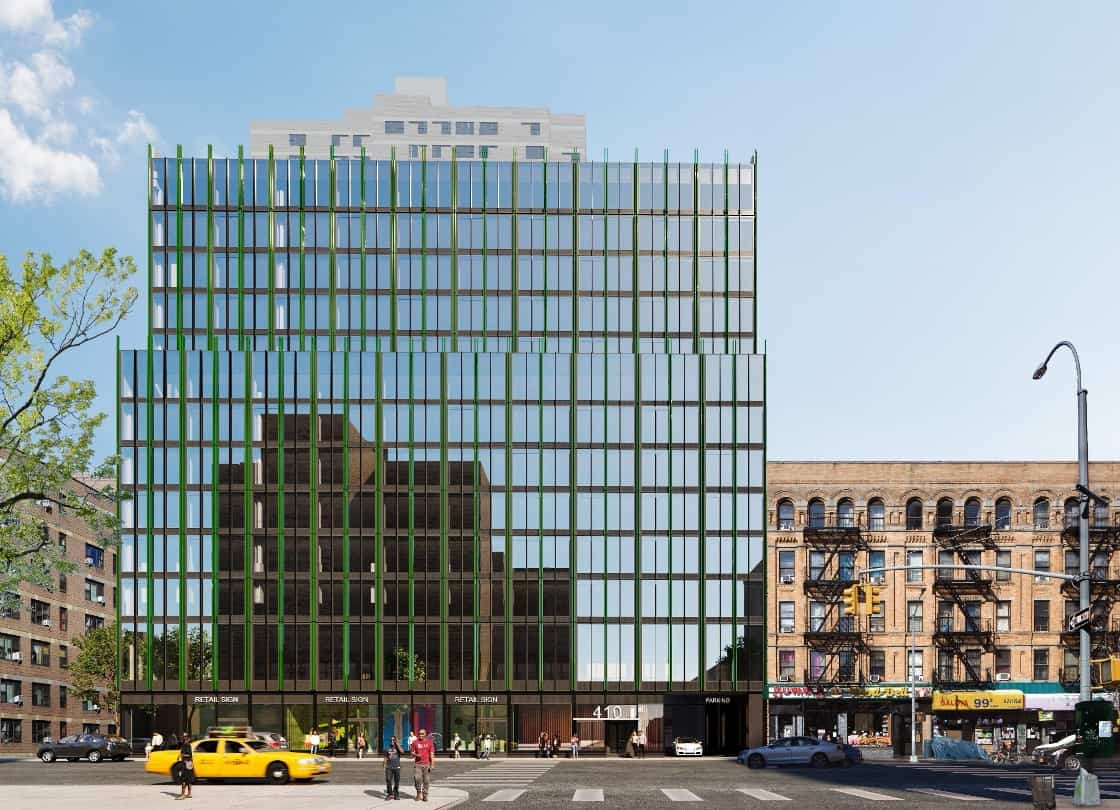Assembly OSM
US-based Assembly OSM is on a mission to transform construction by adopting a “post-modular" approach, a technologically advanced process of digital design, manufacturing, assembly and on-site installation for architecturally distinctive high-rise buildings. By using Dassault Systèmes’ 3DEXPERIENCE Cloud platform and its From Experience to Construction industry solution experience, Assembly OSM enables project stakeholders to virtualize construction know-how and move from trade-based installation to multi-trade engineering and assembly.
A fix for construction
According to reports from Freddie Mac, the US is almost four million houses short of the demand from potential homebuyers. The surging cost of materials only is exacerbating the problem – it’s pushed home prices up by 18% between June 2021 to June 2022, and is the impetus of what Forbes describes as a “housing market meltdown.”
The traditional approach to construction is no longer fit for purpose. And while a new wave of companies offering modular construction – where buildings are prefabricated in a factory – promises a solution in the form of cheaper and faster processes, Andrew Staniforth, CEO at Assembly OSM, believes the approach is still falling short.
“There are some really big problems in the industry at the moment,” Staniforth said. “In high-density urban areas, you have to build on infill lots, you have to be able to deal with the zoning, the politics – and all the complexity that goes with that. You can’t just choose something off the shelf and drop it down in New York City, it just won’t work. Unfortunately, many of the first wave of modular companies have failed to recognize this.”
Staniforth believes there’s a far better approach. “At Assembly OSM, we do things differently. We construct custom buildings for urban environments – typically high-rise buildings – and we do that via what is often referred to as ‘modular 2.0’ or ‘post-modular.’”
The team engineers components and sub-assemblies to fit to a single platform of infinite combinations. Every element is designed specifically for a high-performance, highly automated fabrication and assembly sequence that achieves remarkable tolerances and high levels of quality.
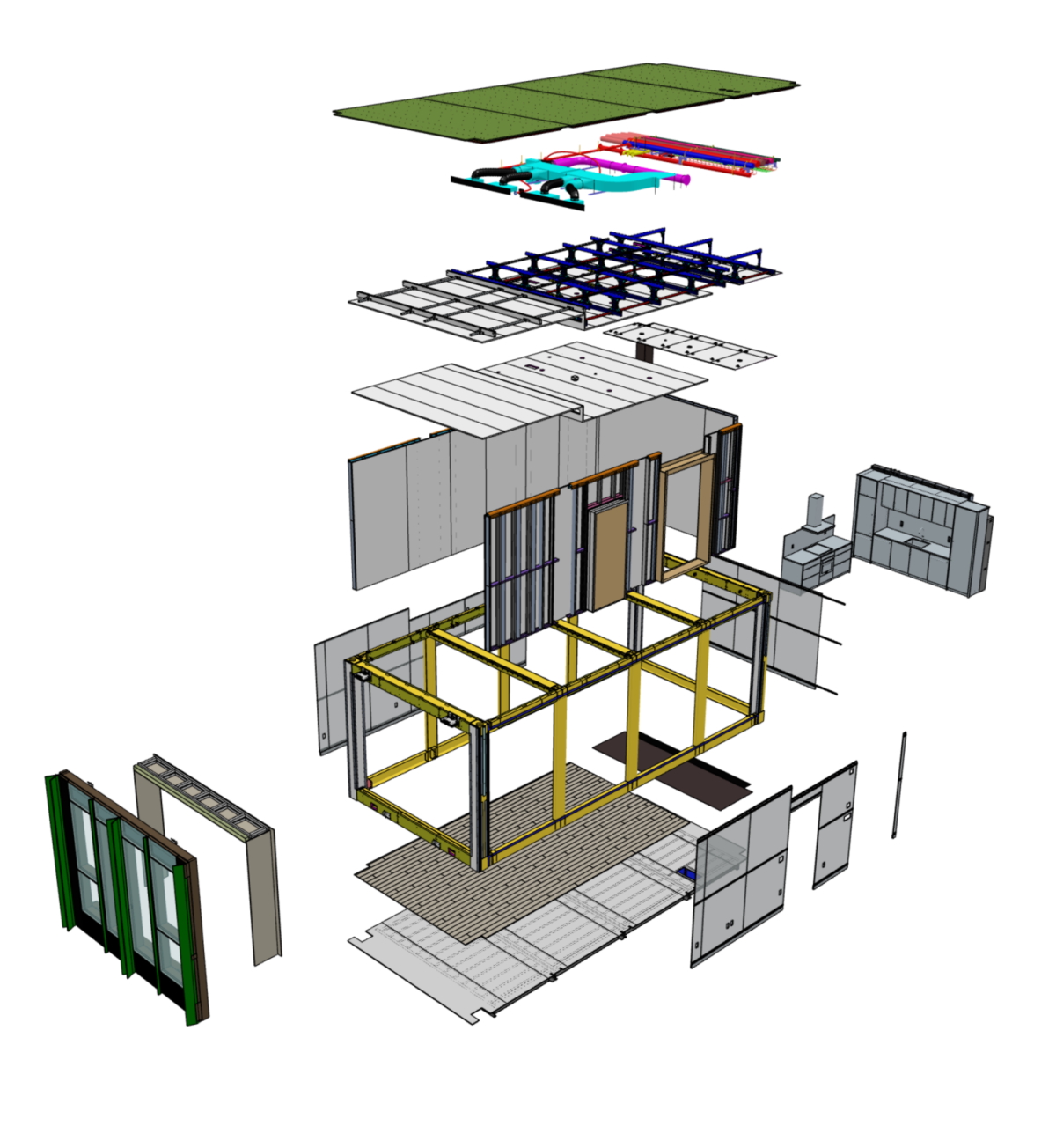
Learning from industry pioneers
Assembly OSM draws inspiration from the way that leading automotive and aerospace firms operate. In fact, the company founders worked in close collaboration with advisors from Boeing, SpaceX and Tesla to fine-tune their strategy. Buildings are designed by Assembly OSM as a 3D digital twin; components are manufactured by the company’s supply chain; and then products are assembled by Assembly OSM and then “stacked” on the jobsite by the company’s general contractor partners.
“One of our key differentiating factors is that we don’t manufacture everything ourselves,” Staniforth said. “We leverage a distributed manufacturing ecosystem. This approach overcomes a lot of the problems inherent in prior modular attempts -- when everything is done in the same place, there’s a single source of failure so if something goes wrong, everything stops. We don’t have that.”
The company claims that this method of operation reduces the timeframe of a project by up to 50% while mitigating the generally unpredictable nature of construction. But taking a distributed approach can be a risky strategy.
“The only way it will work is if you have control and reassurance that each of those moving parts will be 100% right,” Staniforth said. “We realized that the standard software tools used in construction wouldn’t be enough for us.”
Assembly OSM wants far greater control. “We want to be able to model at a much higher level of fidelity [to enable more reliable procurement] – in the same way that Boeing models its airplanes,” Staniforth said. “That’s why we chose the platform often used by the aerospace industry – Dassault Systèmes’ 3DEXPERIENCE® suite of applications – including CATIA and ENOVIA.”
The solution gives Staniforth’s team the level of control they are looking for. “Because the 3DEXPERIENCE platform unlocks a level of precision typically unheard of in construction, we can rest safe in the knowledge that the end product will be exactly as we designed, and will achieve the level of performance it is supposed to.”
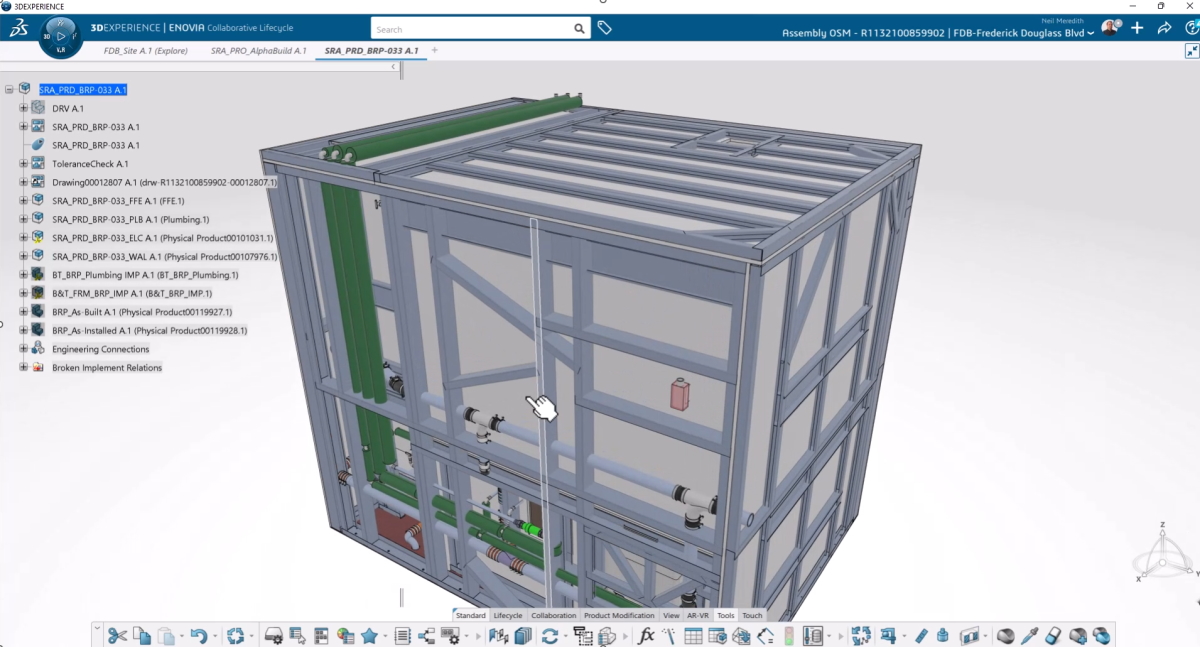
A platform for success
Neil Meredith, Assembly OSM’s director of digital delivery, believes that the 3DEXPERIENCE Cloud platform represents the most robust platform available to the company. “We discovered that we could use it to work with multiple suppliers – to break designs down into sub-4 assembly structures, and then use those models in a variety of different contexts without having to switch platforms,” he said. “That was very appealing.”
Assembly OSM implemented the solution with support from Dassault Systèmes’ business partner CadMakers. “Having the support of CadMakers has been instrumental to our success,” Meredith said. “They’ve provided invaluable consulting services and support as our team has grown.”
“To be successful in this space we have to collaborate, and CadMakers has been a true partner in that regard,” Staniforth said. “It feels like we’re rowing in the same direction – we’re on the same team – and that’s really refreshing.”
The team at Assembly OSM chose to host 3DEXPERIENCE on the cloud, rather than on-premises. “Because of the distributed nature of our business, the cloud makes far more sense,” Meredith said. “We want to work with suppliers all over the globe. We got up and running incredibly quickly, and were particularly impressed with how easy it was to manage licensing. We can add people into projects very quickly and change things on the fly if we need to.”
[The 3DEXPERIENCE platform] is very tightly integrated with our business model – in fact, I think it’s almost inseparable from it. It has unlocked the resiliency and the customizability that typically has not been allowed in modular construction before.
Strength in digital continuity
Digital continuity is important to the team at Assembly OSM, and that is undoubtedly one of the unique selling points of the 3DEXPERIENCE Cloud platform. “Capturing the whole process – from design through manufacturing – all within the platform unlocks a whole bunch of different things that just aren’t available in a traditional delivery process,” Staniforth said.
And by capturing that process on the platform, the company experiences better collaboration. “ENOVIA has driven decision-making into the platform,” Staniforth said. “The old way of working would involve taking static screenshots and then managing those in a spreadsheet. But by moving design review into the native design tools, we can immediately see that a requested change has been fixed, for example. It means we are all working together using the actual source geometry itself, instead of working in a disjointed way across multiple disparate solutions.”
This centralized approach is particularly useful when working in a distributed environment. “We have a single source of product information that we can push and pull to and from every stakeholder in the process,” Staniforth said. “While we have not technically created an operational digital twin yet, it’s still a digital twin of sorts – a fabrication level model that provides everyone with all the information they need, right down to the minutest of details.”
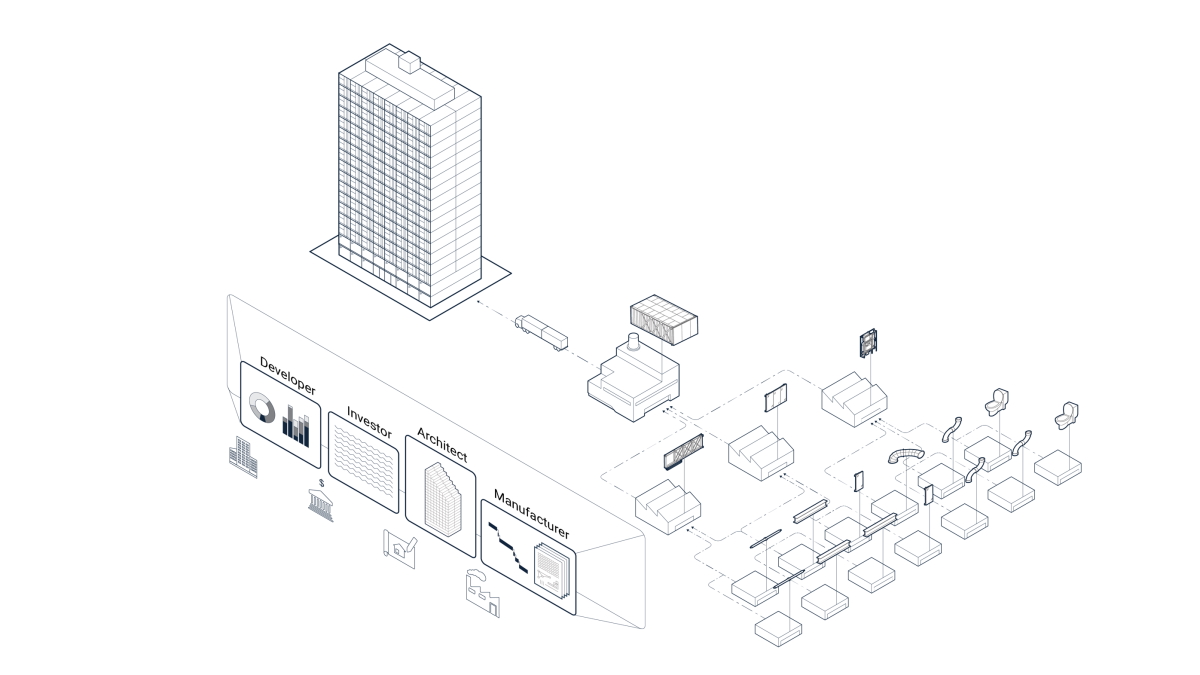
The templating of these fabrication-level models delivers further benefits, specifically time- and cost-savings. “We’ve divided our building up into a series of products or sub-assemblies,” Meredith said. “There’s the structural chassis, for example, and then the facade. Within those we have certain configurations, but we also want to allow a certain degree of flexibility. For example, we have a four-column chassis or six-column chassis using engineering templates, we are able to quickly create variations of that template without having to start from scratch.”
This means that Assembly OSM can go beyond productization. “While we are productizing the process, we are using CATIA to achieve more customization,” Staniforth said. “With typical productization, you have a discrete set of options, but what we’re doing is building a much more continuous spectrum of options that you can do parametrically.”
“With this approach, we have been able to actually bridge the gap between manufacturability and customizability,” Meredith said. “That’s something that a lot of other companies in our space have been unable to reconcile.”
Facilitating an almost infinite number of options requires a platform that can manage large data sets. “It’s a constraint of many competitive modeling platforms, but with CATIA on the platform we can manage large sets of information really easily,” Meredith said.
Building responsibly
The importance of accurate performance shouldn’t be underestimated, not least at a time when construction firms face increasing pressure to deliver more sustainable products.
“The built environment is responsible for 40% of carbon emissions, so we really do believe that it’s our responsibility to build better,” Staniforth said. “The tools within the 3DEXPERIENCE platform allow us to create a high-fidelity bill of materials for every building we create, broken down into all of the different materials. We can then understand those materials and quantify their impact on the environment at a very early stage.”
With detailed information about every part or component, Staniforth, Meredith and the team can analyze the amount of embodied carbon in their products, for example, and even map the sustainability impact of their supplier network. As a result, Assembly OSM eliminates most of the concrete in its buildings. “And when we reduce concrete, which is very carbon-intensive, we reduce our embodied carbon significantly,” Staniforth said.
Having greater control and insight into its operations also helps the company keep an incredibly lean manufacturing process. “Because we approach building from a manufacturing point of view as opposed to a construction process, we can reduce waste materials significantly,” Staniforth said.
Additionally, Assembly OSM makes great progress with reducing emissions. “We’re greatly reducing the number trucks arriving on our sites compared to traditional construction,” Meredith said. “That’s as a result of having a tightly controlled manufactured- and tiered-production system.”
And then there’s one of the biggest advantages of modular buildings: their ability to be easily deconstructed and reused. “Our buildings don’t need to be brought down with a wrecking ball,” Staniforth said. “It’s a volumetric and panelized system, so you can dismantle it and then repurpose it. There’s very little waste.”
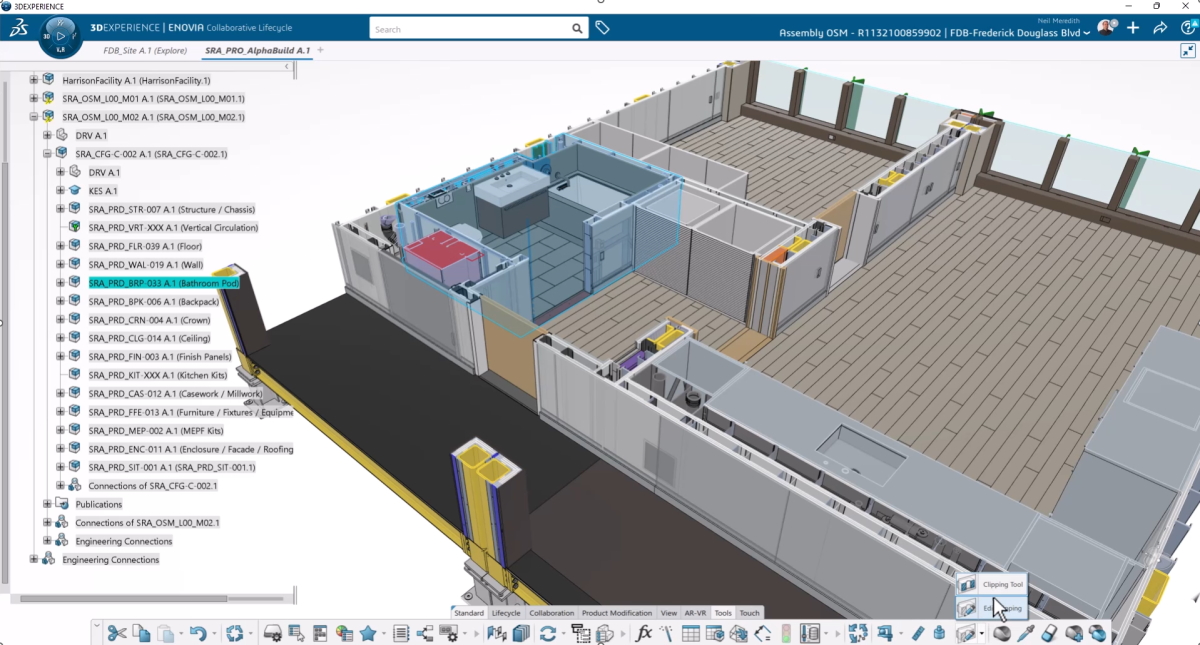
Scaling for growth
Ultimately, Staniforth is delighted with Assembly OSM’s achievements on the 3DEXPERIENCE Cloud platform so far. “Overall, the 3DEXPERIENCE platform solves some very specific problems for us and I would say it’s foundational to the way we operate – in terms of the way we work with suppliers and the way we’re managing products,” Staniforth said. “It’s very tightly integrated with our business model – in fact, I think it’s almost inseparable from it. It has unlocked the resiliency and the customizability that typically has not been allowed in modular construction before.
“We intend to scale quite quickly in different markets. That means the team will grow – and the 3DEXPERIENCE platform will grow with us too. I’m excited to see where it takes us.”
Discover more about the From Experience to Construction industry solution experience.
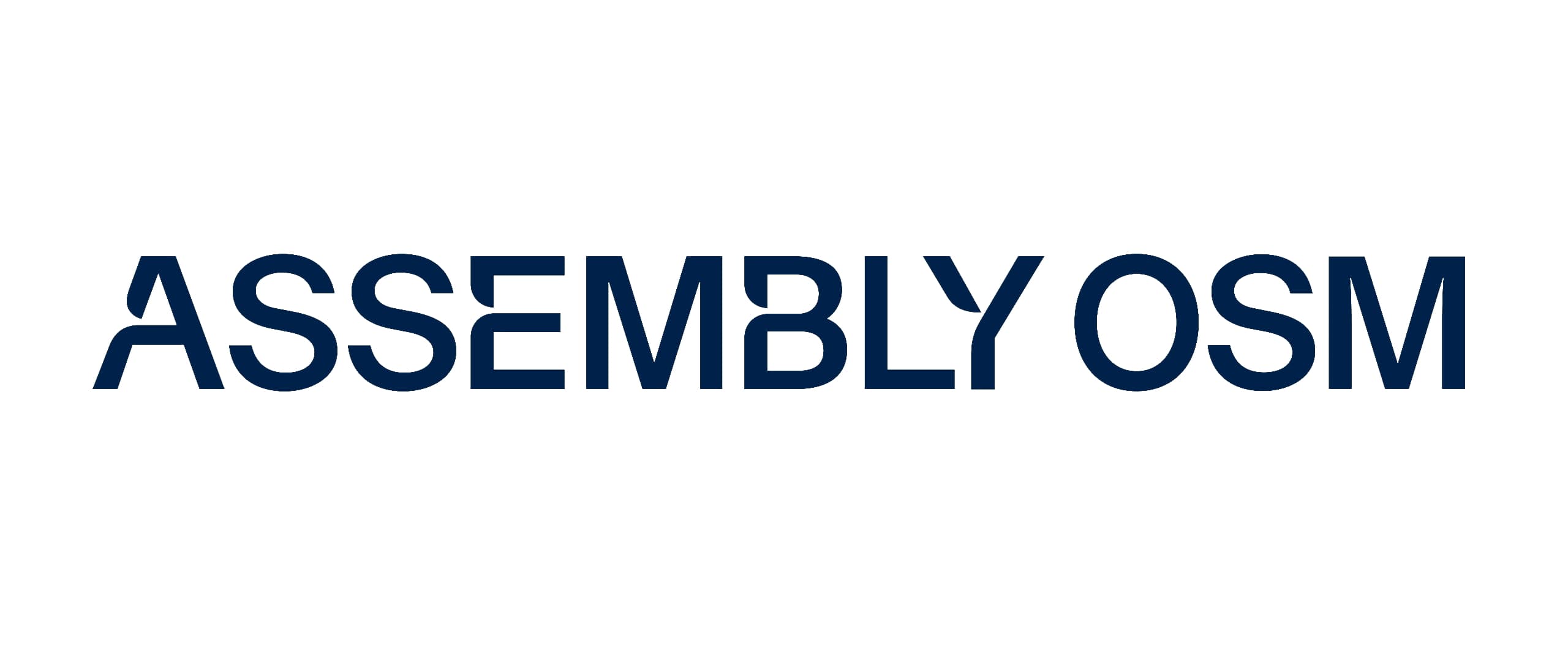
Focus on Assembly OSM
Assembly OSM delivers architecturally distinctive high-rise buildings through a technologically advanced process of digital design, manufacturing, assembly and on-site installation. This "post-modular" approach allows the company to offer a significantly reduced time to completion, with vastly improved cost- and schedule-certainty, compared to conventional projects.
For more information: https://assemblyosm.com/

Focus on CadMakers
CadMakers partners with leading architecture, engineering and construction companies to provide a range of virtual design and construction (VDC) services to enable smarter building. Services include 3rd party construction design and coordination review; constructability analysis; virtual design and construction implementation frameworks and protocols; enablement of mechanical prefabrication; concrete detailing packages; and shop drawing generation.
Revenue: Privately held
Headquarters: Vancouver, British Columbia, Canada
For more information www.cadmakers.com
